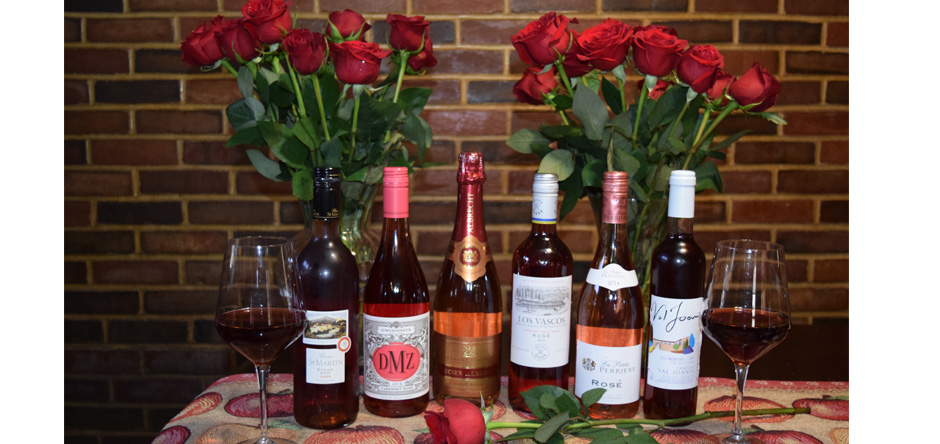Several years ago, I was asked to pick some wines for a New Year’s celebration. I picked out some delicious dinner wines and a variety of Champagnes. Included in my selections were several sparking Rosés produced by Nicolas Feuillate of Epernay in Champagne. When the boxes were opened someone said to me, “I can’t believe you bought Rosé Champagne. I’m not drinking that. It’s too sweet.” And that sums up what many people think of Rosé wines, be they still or bubbly. There are Rosé wines from all over the pricing, flavor, color and sweetness spectrum. There are Rosés with varying amounts of residual sugar, which will produce a sweet- tasting wine. And there are those made with complete fermentation of the natural sugars in the grapes, leaving a very dry wine. Rosé wines all show a fruitiness often mistaken for sweetness.
The better Rosés of the world are made by the saignée or “bleeding off” method. This calls for red wine grapes to be crushed and fermented with skin intact. When the color and sweet flavor reach the preferred house style, the wine is drained off with no pressing of the grape skins and grape material. This creates an easy-drinking wine almost ready for consumption. In the Languedoc-Roussillon region in the south of France, Rosés are made for immediate consumption. Their preferred style calls for almost no reddish color in the wine. In fact, some Rosés from the region need to be held up to white paper in bright light to see even the light onionskin tint. If these wines aren’t sold within a month or so, they will linger on the shelf — a bad thing in the south of France were old for a Rosé is measured in months, not years.
In the Navarra region of northern Spain, just over the Pyrenees from southern France, vintners make a lively, fresh, resplendent Rosé ranging in color from orangey salmon to an almost phosphorescent, translucent ruby. The better producers of Navarra are happy to drink fresh Rosés but will often age their Rosés for years, dulling the color slightly but changing the flavor from freshly picked fruit to a more contemplative wine experience. I tasted Rosés, both fresh and aged, from Navarran producers Chivite and Arinzano and they were wonderful.
Rosé wines can be made from blending white wines with a bit of red wine to achieve color. Some production areas of the world ban this method and require producers to make the wines using only red grapes with only a short amount of skin contact time. Typical grapes used for Rosé production are Pinot Noir, Syrah, Cabernet Sauvignon, Cabernet Franc, Grenache (Garnacha in Spain and Chile),Gamay, Malbec and Cinsault. Each production area of the world has its grape and style preference, depending on the terroir and regional legacy.
There is a curious relationship between roses, the flower, and grape vines. I have been in many vineyards in both hemispheres and on several continents, and most vineyards have rose bushes planted in the vineyard. Every row or every few rows, you will likely find a flowering rose bush. The flowers do provide a beautiful splash of color in an otherwise mostly brown and green environment. But more important, roses have a “canary in a coal mine” duty. Roses are more susceptible than grapevines to several fungi, including powdery mildew and downy mildew. If these diseases are seen on the roses, it tells the vineyard manager it will soon be on the fruit and foliage of the grape vines and allows time for prophylactic control. The roses also attract beneficial insects that can help control pests of the vines.
So roses and Rosés: Nothing says “Spring is here” quite so dramatically. Generally speaking, Rosés are not expensive so it’s easy to pick up several at a time. And if you are entertaining more than a few friends, there’s nothing wrong with uncorking several at once. Look for citrus notes and light lemon, orange, strawberry or maybe raspberry flavors. Rosés are great wines to share outdoors, overlooking a pool, a beach or a garden. And don’t forget the sparkling Rosé. Just like a freshly presented bouquet of roses, these wines will make you smile.
Write me at doug@dougpaulding.com.


